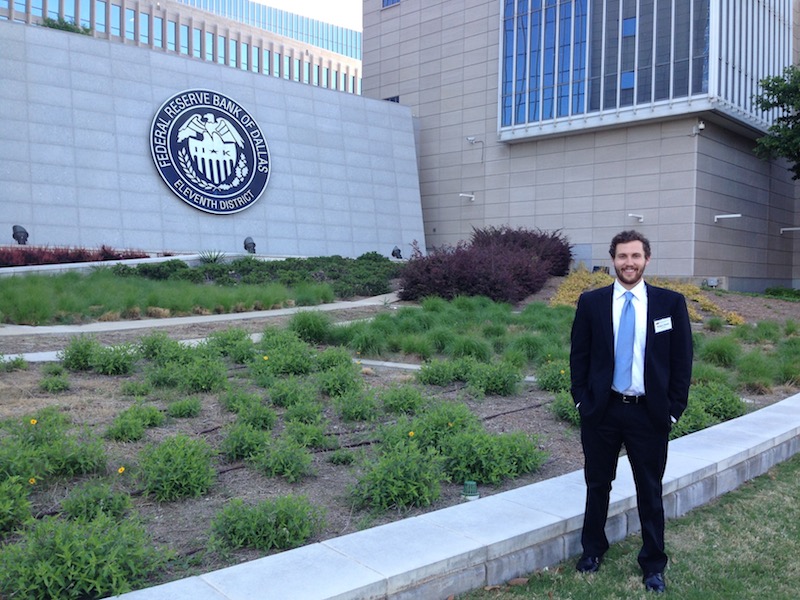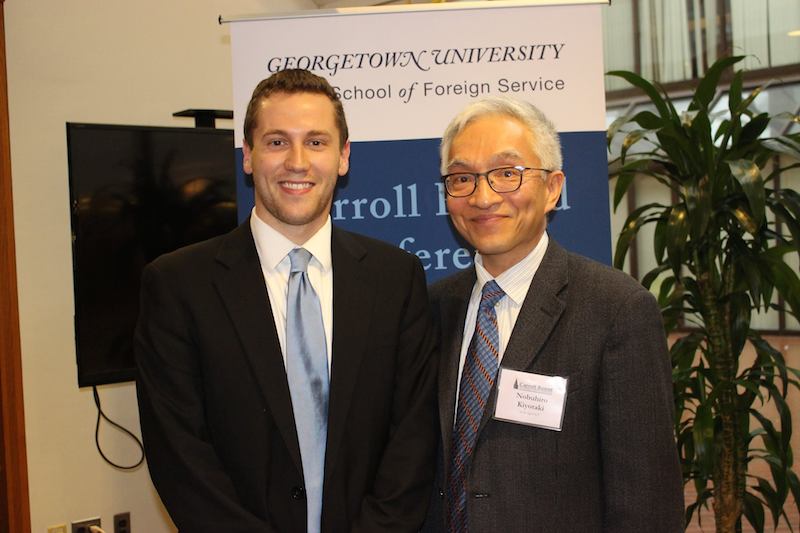Greg Maslak ’17 and Assistant Professor Gonca Senel Shed Light on the Merits of Bank Mergers in Downturns
By Rebecca GoldfineEconomics research that Gregory Maslak ’17 pursued his senior year has been published in the scholarly Journal of Financial Services Research. The paper was coauthored by Assistant Professor of Economics Gonca Senel.

In the article, the authors "analyze the relationship between US bank consolidation and systemic risk before, during, and after the 2008 financial crisis," finding "that mergers during the crisis decreased market-adjusted systemic risk."
The journal's managing editor Haluk Unal said it is rare for an undergraduate to co-publish an article in his journal. "To be able to mentor an undergraduate student for a research paper is commendable," he added. "Not many junior faculty are capable of bringing a research paper to a publishable level with an undergraduate student."
The Honors Project

*This article was originally published in 2017.
In his senior-year honors project, Maslak zeroed in on the 2008 financial crisis and the seeming dichotomy that resulted from policies implemented during the Great Recession. While big banks were blamed for causing the economic fall, preserving and protecting big banks also became part of the solution for it.
“There was a fear then that the collapse of large interconnected banks, which are commonly said to be too big to fail, would cause significant disruptions to the broader economy, potentially exacerbating the downturn,” Maslak explained
At the time, the federal government was scrambling to prevent the failure of these banks, and latched onto the solution of encouraging new mergers and acquisitions between the big banks themselves. This private-sector treatment was considered preferable to massive government bailouts, which officials feared would have been met with an uproar from the public.
“The basic idea was that through a merger, you have a healthy bank acquire a failing bank and in this way, you prevent the economy from experiencing the full costs of the distressed bank’s collapse,” Maslak said.
Some of the largest and most famous examples of such government-assisted mergers include JP Morgan’s acquisition of Bear Stearns, Bank of America’s purchase of Merrill Lynch, and Wells Fargo merger with Wachovia.

However these mergers, of course, resulted in even larger institutions. “In other words, the short-term answer of the merger potentially posed even greater risks to financial stability,” Maslak said. With these government-assisted mergers in mind, Maslak decided to find out if bank mergers during the crisis actually helped the acquiring institutions — and thus, the broader economy. This was the topic of his senior honors thesis, “Bank Consolidation and Systemic Risk: M&As During the 2008 Financial Crisis.”
With funding from the Peter J. Grua ’76 and Mary G. O’Connell ’76 Faculty Student Research Fund, Maslak presented his findings at two undergraduate economics conferences this spring, one at the Federal Reserve Bank of Dallas and the other at Georgetown University in Washington, D.C., where he discussed his research with fellow students and academics.
For his thesis, Maslak scrutinized 475 mergers of relatively large banks from 1995 to 2013, a time span that covers stable economic periods as well as the financial crisis. He found that on average, mergers that took place during the troubled financial period of 2007-2010 did indeed strengthen the new combined institution, thereby reducing the risk of the acquirer as well as the risk in the overall financial system.
His advisor, Assistant Professor of Economics Gonca Senel, praised Maslak for using multiple, advanced measures to capture systemic risk. “With the help of thorough analysis, he showed that for multiple risk measures he has used,…banks that merged during the crisis period did improve the stability of the financial system,” she said.
According to Maslak, the reason for this difference is because mergers during the 2008 financial crisis tended to involve larger, profitable banks that held higher levels of tangible assets. “The data suggests that large healthy banks in 2008 were acquiring poorer performing banks and were able to successfully integrate them into their own operations, potentially supporting the use of M&As as a means of bank resolution by the U.S. government during the crisis,” he said.
However, he cautioned that his research analyzed bank mergers in general and that further research isolating the government-assisted mergers is necessary in order to determine the impact of this economic policy.
After graduation, Maslak will begin a job as an investment associate with Cambridge Associates in Boston, Mass.



